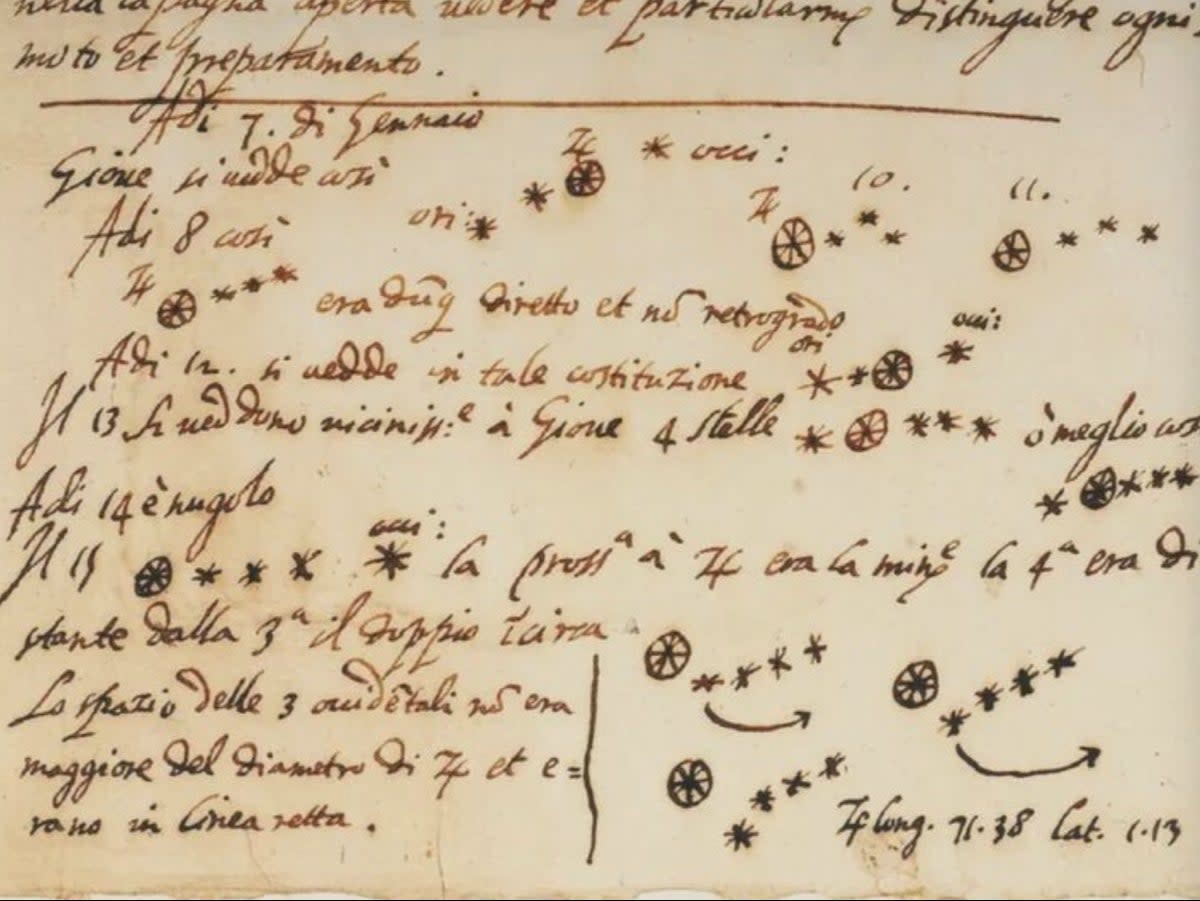Galileo document discovered to be forged

- Oops!Something went wrong.Please try again later.
The University of Michigan has revealed that a century-old manuscript it held, which was attributed to Galileo, was actually created by a well-known forger.
The document was believed to be a draft of a letter Galileo sent to the Doge of Venice concerning a telescope that was built in 1609. The bottom half of the manuscript allegedly included draft recordings made by Galileo when he used the telescope to observe Jupiter's moons.
A history professor from Georgia State University began investigating the document and found it was actually the work of Tobia Nicotra, who was imprisoned in the 1930s for a different forgery.
The document was bequeathed to the university in 1938 by Tracy McGregor, a businessman in Detroit who collected books and manuscripts. The document previously was in possession of the American Art Anderson Galleries, which was selling the library of Roderick Terry, a wealthy manuscript collector. The document was among Mr Terry's collections, and had allegedly been authenticated by Cardinal Pietro Maffi, the Archbishop of Pisa.
The Cardinal reportedly compared the forgery against a letter signed by Galileo he had in his personal collection.
Nick Wilding, the history professor at Michigan University, suspected the letter could be fake and emailed Pablo Alvarez, the university's curator, in May 2022 about his suspicions. He had exposed other Galileo forgeries in the past, including a copy of the Sidereus Nuncius owned by a rare-book dealer in New York City.
Ultimately, Mr Wilding concluded that the manuscript was a forgery by Nicotra. The university's experts also examined the manuscript and Mr Wilding's evidence, and agreed with his conclusion.
“It was pretty gut-wrenching when we first learned our Galileo was not actually a Galileo,” Donna L Hayward, interim dean of the University of Michigan’s libraries, told The New York Times.
The university decided to announce their findings to the public as an act of transparency.
“To sweep it under the rug is counter to what we stand for,” Ms Hayward said.
The investigation found that the watermark on the document has never appeared in a document before 1770, making it impossible for the document to be authentic.
Further, there has been no trace of the document's existence found before 1930.

